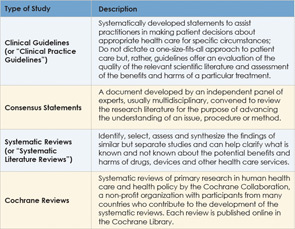Clinical guidelines are an increasingly important way for physicians and other health care providers to apply the best evidence to clinical practice. Many of these guidelines come from medical specialty societies such as the American Academy of Otolaryngology-Head and Neck Surgeons (AAO-HNS) and are driven, in part, by the need for specialties to identify their own best practices amid wide variation in clinical practice and the increasing complexity of health care delivery. The primary aim of guidelines is to give clinicians a tool that, along with clinical judgment and experience, helps them provide the best patient care possible.
Explore This Issue
July 2012Although clinical guidelines are becoming a larger part of medical parlance and practice, ambiguities remain about what they are and are not, how they are developed and how they should be used. The various terms used to denote these guidelines also muddy the waters. Here is a primer on the nuances of clinical guidelines.
Background
The emergence of clinical guidelines can be traced to the evidence-based medicine movement that took hold in the 1990s. A landmark article by Guyatt and colleagues published in 1992 described evidence-based medicine as an emerging paradigm for medical practice in which clinical decision-making is based more on
evidence from clinical research and less on intuition and unsystematic clinical experience (JAMA. 1992;268(17):2420-2425). The study emphasized the need for physicians to learn new skills to apply the evidence-based method to clinical practice, including how to conduct efficient literature searches and to apply the formal rules of evidence evaluation of the clinical literature. An editorial published in 1996 further laid the foundation by stating that “evidence-based medicine is the conscientious, explicit and judicious use of current best evidence in making decisions about the care of individual patients” (BMJ. 1996;312:71-72). This movement sparked a greater focus on advancing medical care by attempting a more systematic, scientific approach to clinical care.

Along with clinical guidelines, other types of evidence also emerged to help guide clinical practice, such as consensus statements, systematic reviews of the literature, Cochrane reviews, protocols and practice parameters. Although all of these types of evidence-based methods are aimed at helping clinicians base clinical decisions on current evidence, clinical guidelines are distinguishable because they combine a rigorous systematic approach of identifying and evaluating the best evidence on a given clinical question with offering recommendations or statements of action to guide clinical decision-making (see Table 1, at left).
Leave a Reply